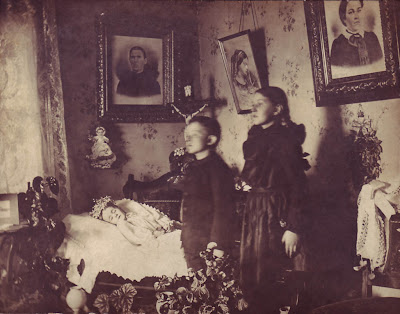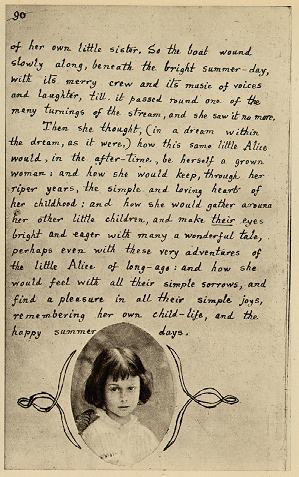The following article is taken from the body of a talk given by Essie Fox while at the 2016 Historical Novel Conference in Oxford. (Also speaking on this panel were Karen Maitland, Mary Sharratt, and Antoinette May. )
Dowlais Ironworks by George Childs. 1840
The Victorian Cult of Death - a cult of misery and grief - took hold in a time of great energy, with advancements in industry and science that created a bridge to our modern world. And yet, so many Victorians were torn between the new ideas thrown up by this revolutionary age, and the more superstitious pagan beliefs carried down from previous centuries.
Add to this the sensation of Charles Darwin’s theory of evolution and the firmest of faiths were challenged, especially when influenced by the charlatans who travelled around with freak shows and claimed to show exhibits such as mermaids brought from Feejee, which were really the mummified remains of a monkey’s upper torso sewn onto the body of a fish. A clever taxidermist’s trick.
![]()
Taken in by such wonders and miracles many Victorians also believed in ghosts - a belief that was partly influenced by authors such as Charles Dickens, who had gone on a tour of America where he witnessed the traditions of Halloween and was particularly intrigued by morbid stories of the dead - after which he came back home again and wrote A Christmas Carol.
Robbie Burns’ poem ‘Halloween’ had fairies that dance on moonlit nights. Why, even Queen Victoria took part in halloween parades when she was at Balmoral. And perhaps on those nights she also read the popular sensation tales, with spirits seen in mirrors, or women who wailed by misty graves, with eerie worlds of make-believe inspired by death, disease and sex, with crumbling castles and dripping crypts ... and perhaps a rotting corpse or two.
Ah, those pale limp corpses! How the Victorian authors loved them - but then they lived in a time when the mortality rate was very high, and all too visible to see. While our ill are confined in hospitals, and even with loved ones who die at home being very quickly whisked away to undertakers’ mortuaries, the Victorian dead would often remain at home until their burial. There was no National Health Service to step in at a time of crisis - or prevent that crisis happening. No inoculations to protect against fatal childhood diseases. No antibiotics to kill off infections considered as trivial today. Not to mention the complications faced by women during childbirth.
![]()
Death could strike at any time. Ruthless, swift, invisible, whatever your age or social class. And for those who strayed too far away from the path of moral righteousness there was the risk of syphilis - a scourge so well alluded to in Bram Stoker’s novel, Dracula, when he writes of the vampire’s lust for blood as something sensual and exotic - but also something sinister, corrupting the flesh and bringing death.
In the nineteenth century, sexual diseases were rampant, and beneath the surface social veneer many immoral deeds went on, with the consequence of such ‘sins of the flesh’ becoming the time’s great leveller, not discriminating in the least between rich, or poor, or famous. So, illicit sex was linked with death. A nightmare! A real life horror tale - which is surely one reason why the age became obsessed with purity, taking their lead from Queen Victoria, who, along with her husband, Albert, portrayed the ideal marriage.
![]()
But, when Prince Albert died so young, at the age of only 42 (and not from syphilis, I stress) Victoria turned her misery into something of an art form, with the man she had adored in life then worshipped as a god in death – with the Queen so often heard to say that wished that she could die as well: to join him in Eternity.
![]()
While waiting for that eternity her mortal flesh must still be clothed – and the fetish for mourning now took hold, with the queen remaining dressed in black until she reached her dying day. Mourning was an industry. People visited vast emporiums which also placed their advertisements in newspapers and magazines. (The mail order business is nothing new!) People who mourned seemed suspended between the world of the living and dead. They wrote on black-edged stationery, blew their noses on black-stitched handkerchiefs, even sometimes threaded black silk ribbons through the lace of their undergarments. They wore black jewellery made of jet - with the best of it from Whitby. (That link to Dracula again!) They tried to keep their loved ones close by wearing lockets with their hair... whereas today we are more content by looking back on photographs.
In the Victorian era, photography was very new. Even when studios opened up where personal portraits could be made, this was something of a luxury; an expense beyond most poorer folk– which is why some people at this time only had their pictures taken once ... very often after they had died, when the body would be washed and dressed, then posed as if still living, sometimes alone, and sometimes in the midst of the rest of the family, thus creating a personal memory to treasure in years to come.
In one of the least disturbing of the Post Mortem images I’ve seen, two children are standing at the side of the bed in which their sister lies where, due to the long exposure time, the living children look like ghosts - blurred, because they moved, whereas the little girl who died is very clear for us to see. But then, of course, she was quite still.
Such accidental blurring soon became a deliberate method used by photographer charlatans who claimed to take pictures of ghosts which hovered close while loved ones posed. I've actually referred to this in my latest novel about Edwardian film (
The Last Days of Leda Grey) with moving pictures being yet another Victorian ‘miracle’ ... when stage magicians often turned to the trade of directing feature films, using smoke and mirror tricks as the forerunners of those special effects we often take for granted now.
It was double exposure, nothing more. Still, it is astonishing to think how people were convinced. But then, we see what we want to see. We believe the things we want to believe - particularly in times of grief.
The Queen’s yearning for her husband meant that she simply couldn’t let him rest, often hiring spirit mediums who claimed to summon up the dead. But, was she, along with so many more, really duped into believing that the souls of the dead could rise again - come home and have a chat with them?
Well, with grand scientific discoveries, such as the harnessing of electricity, with X Rays to see beneath the flesh, or voices heard through the ether as they travelled along a telegraph wire – why should it not be possible to discover another invisible force, and to tap into the energies of those spirit souls beyond the veil?
![]()
I’ve also covered some aspects of this cult in my Victorian novels. In The Goddess and the Thief we actually see Victoria meeting with some mediums. Indeed, while he was alive, she and Albert conducted séances. Gladstone, her Prime Minister had been a founding member of the Society for Psychical Research.
Another acquaintance of the Queen who firmly believed in the spirit world was a certain Mr Brown; the gamekeeper turned confidante, who claimed to have a psychic gift through which to channel Albert’s soul. If only Victoria’s diaries had not been edited when she died ... since when she shares eternity, not only with Prince Albert's corpse, but also with some keepsakes from John Brown. For, after being laid to rest, her personal physician testified that the royal tomb at Frogmore contained not just the royal pair, but also a lock of John Brown's hair, a photograph, some letters, and a ring that had once belonged to John's mother.
The Queen – like so many of her time - went to her grave a Christian. But she was also influenced by the eastern myths and religions encountered through the Empire’s reach - which also inspired stories such as Wilkie Collins’
The Moonstone, which was based on the cursed Koh-i-noor, a sacred diamond that was said to have some supernatural powers.
I’ve also woven this into the story of
The Goddess and the Thief which features
Alice Willoughby, who was born and raised in India, until at the age of eight she is sent away to England. There she lives with her Aunt Mercy, a fraudulent spirit medium who forces the young and defenceless child to take part in the séances she holds - as described here in this extract, which illustrates some of the tricks that fakes like Mercy might have played ...
I walked the path of Mercy’s ghost. I acted in her Mysteries. I became an apprentice in the trade for which she placed advertisements: discreet invitations in magazines for “Tea and Table Moving” ... for which she had me eavesdrop on those ‘guests’ who waited in hall. Nearly always women, nearly always old, exchanging confidential woes, and thus revealing vital clues. And later, when they had been called to sit beside the parlour fire, when the front door bell would chance to ring, requiring Mercy be called out on a matter of some urgency – that subterfuge was all it took for me to show my aunt the page on which I’d scribbled down the facts that I had learned while hiding: those names and sorrowful events that might then drip from Mercy’s lips.
When guests returned as regulars, when no more secrets need be learned, I wore the garments of the ghost, the hushing silks, the sheer black veils, the darkness of which obscured the face on which my aunt brushed silver paste, with ashes smudged around my eyes, to make me look half skull, half corpse. At other times a mask transformed my face into an infant child, whose tiny rosebud mouth would cry, ‘Mama - dear Mama. I am here!’
In daylight, it was pitiful to see those crude deceptions. I felt ashamed to play a part, to cause yet more unhappiness. But in the parlour’s darkness, the power of those wicked acts! Truly it was astonishing when, at Mercy’s given signal – a pre- arranged word, a certain look – her spirit guide materialised from behind ‘The Filmy Veil of Death’, which was generally the Chinese screen or the drapes in the dimmest corner ... from where I would float across the room, leaving a trail of apports behind – the blooms that might be Spirit-sent: as were the kisses that I gave. The touch of lips on tear-damp cheeks. The diversion of which allowed my aunt the chance to fling some sprays of dust from her pocket down into the hearth – where those chemicals would cause the flames to crackle purple, orange, red - exuding such a dense grey pall while I opened the door and left the room, during which my aunt would stand and chant:
Through the mists that hide the Light of God,I see a shapeless form of Death.Death comes and beckons me today to glimpse the sacred Summerland. And with commingled joy and dread, I hear the far-off whispers . . .
Were all those far off whispers real? Will we meet again in the summerlands? The only thing I know for sure is, oh, so very well expressed in the Latin ‘Memento Mori’ - which is: Remember You Must Die.






































%5B1%5D.jpg)










































































